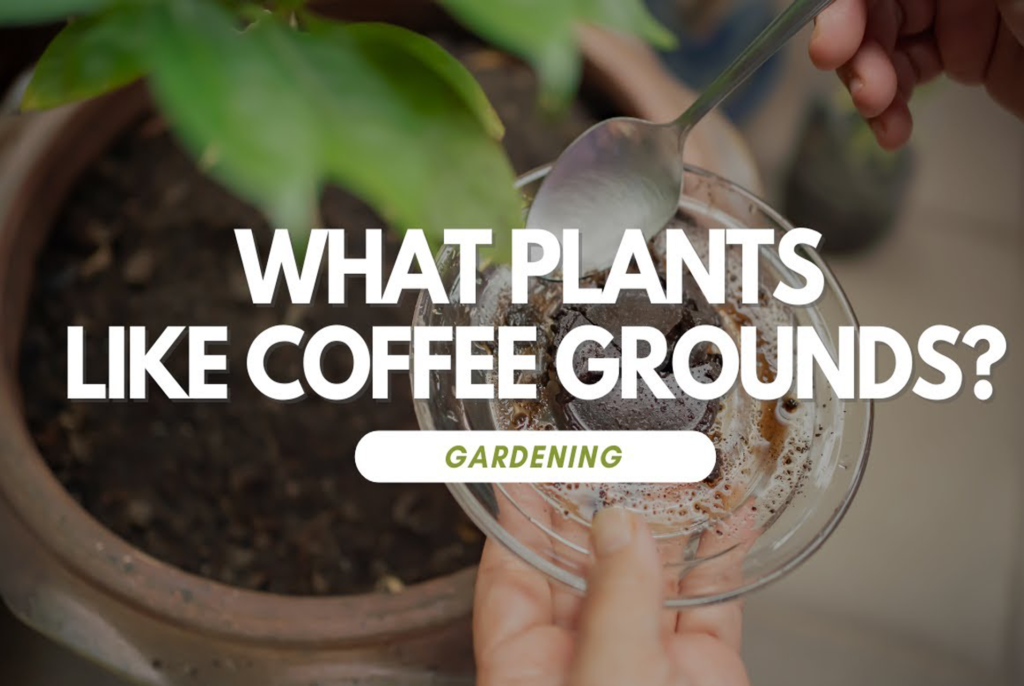Coffee grounds are a sustainable and nutrient-packed addition to any garden when used correctly. While they enrich soil and benefit specific plants, they can also deter pests and impact soil health under certain conditions. In this guide, we’ll explore the best plants for coffee grounds, their proper use, and potential drawbacks, ensuring you can garden smarter and sustainably.
What Makes Coffee Grounds Special?
Coffee grounds contain a mix of nutrients and properties that make them beneficial to plants and soil:
- Nitrogen: Promotes lush foliage growth.
- Phosphorus & Potassium: Supports root health and flower formation.
- Organic Matter: Improves soil structure, aeration, and water retention.
- Pest Deterrent: Their texture and compounds help repel certain pests naturally.
How Do Coffee Grounds Deter Pests?
Coffee grounds act as a natural pest deterrent in several ways:
- Physical Barrier:
- The coarse, gritty texture of coffee grounds makes it difficult for pests like slugs and snails to traverse the soil. These pests dislike the sharp edges, which can damage their bodies.
- Repellent Compounds:
- Coffee grounds contain caffeine and other compounds that are toxic to some pests. For example:
- Ants: The scent of coffee grounds disrupts their chemical communication.
- Slugs & Snails: Caffeine can act as a neurotoxin, discouraging these pests from approaching.
- Cats: Sprinkling coffee grounds in garden beds may keep cats from digging or lounging.
- Coffee grounds contain caffeine and other compounds that are toxic to some pests. For example:
- Weed Suppression:
- Coffee grounds suppress weed germination, reducing competition for nutrients and keeping your garden tidy.
While coffee grounds can help deter pests, they are not a substitute for dedicated pest control measures in cases of severe infestations.
Best Plants for Coffee Grounds
Certain plants thrive with the nutrients and slight acidity provided by coffee grounds:
1. Acid-Loving Plants
- Blueberries: Love the slightly acidic boost for better fruiting.
- Azaleas & Rhododendrons: Bloom more vibrantly in acidic soils.
- Camellias: Appreciate acidity for healthier flowering.
- Hydrangeas: Can develop deeper blue tones with slightly acidic soil.
2. Heavy Feeders
- Tomatoes: Respond well to slow-release nitrogen for fruit development.
- Roses: Enjoy the added nutrients, leading to lush foliage and abundant blooms.
How to Compost Coffee Grounds Effectively
Composting is the best way to use coffee grounds while ensuring balanced nutrient distribution:
- Balance the Carbon-Nitrogen Ratio:
- Coffee grounds are rich in nitrogen (green material). Mix them with carbon-rich materials like dried leaves, straw, or shredded newspaper in a 2:1 brown-to-green ratio.
- Layer and Turn:
- Alternate layers of coffee grounds with brown materials. Turn the pile regularly to aerate and speed up decomposition.
- Use in Moderation:
- Limit coffee grounds to no more than 20% of your compost pile. Overloading the pile with nitrogen-rich grounds can disrupt microbial activity.
- Monitor Moisture:
- Coffee grounds retain water, so avoid overwatering your compost pile. Keep it damp but not soggy.
Can Coffee Grounds Harm Soil Health?
While coffee grounds offer many benefits, overuse can negatively affect soil health:
- Nitrogen Imbalance:
- Fresh coffee grounds can temporarily tie up nitrogen as they decompose, leaving less available for plants. Composting first mitigates this issue.
- Acidity Misconception:
- Contrary to popular belief, used coffee grounds are generally neutral to slightly alkaline because brewing removes most of the acidity. However, excessive application may alter soil pH over time, potentially harming plants that prefer neutral to alkaline conditions.
- Compaction Risk:
- When used as mulch, thick layers of coffee grounds can compact and form a water-resistant barrier, blocking air and water from reaching plant roots.
- Chemical Residues:
- Non-organic coffee grounds may contain traces of pesticides or other chemicals. Opt for organic coffee grounds to minimize potential risks.
To avoid harming soil health, use coffee grounds sparingly, mix them with other organic matter, and monitor your soil’s condition regularly.
Which Plants Dislike Coffee Grounds?
Some plants may not benefit—or even suffer—from the application of coffee grounds:
- Carrots and Radishes: Excess nitrogen can stunt root development.
- Beans and Peas: Prefer less nitrogen-rich soil and may struggle with overuse of coffee grounds.
- Lavender: Prefers alkaline or neutral soil and may be harmed by any residual acidity.
- Most Herbs: Rosemary, thyme, oregano, and sage thrive in well-draining, neutral-to-alkaline soil, which coffee grounds can alter.
Avoid using coffee grounds for these plants or opt for composted grounds to minimize potential harm.
How to Use Coffee Grounds Effectively
To maximize benefits and avoid pitfalls, follow these tips:
- Compost Them:
- Composting coffee grounds ensures they are broken down fully, providing balanced nutrients for all plants.
- Apply as Mulch:
- Spread a thin layer around plant bases to suppress weeds and retain moisture. Avoid thick piles to prevent compaction.
- Mix Into Soil:
- Incorporate coffee grounds into soil during planting to improve structure and fertility. Pair with other organic matter for balanced application.
- Vermicomposting:
- Worms love coffee grounds! Add them gradually to your worm bin for nutrient-rich castings.
Final Thoughts
Coffee grounds are a fantastic resource for gardeners when used thoughtfully. They enrich soil, deter pests, and support acid-loving and nutrient-hungry plants like blueberries, tomatoes, and roses. However, moderation and proper application are essential to avoid potential downsides, such as soil compaction or nitrogen imbalance. By composting coffee grounds and applying them carefully, you can turn waste into a valuable gardening ally.
Next time you enjoy your morning brew, save those grounds and let your garden reap the benefits!
